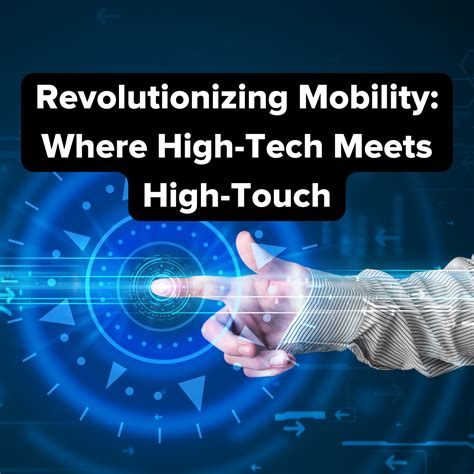The intersection of technology and human interaction is revolutionizing the way we approach science. Gone are the days of dusty laboratories and detached researchers. Today, high tech meets high touch in science, resulting in innovative breakthroughs and a more collaborative, compassionate approach to discovery.
The union of technology and human connection is not only driving scientific progress but also transforming the way we live, work, and interact with one another. As we delve into the world of science, we find that the integration of high tech and high touch is yielding remarkable outcomes.
The Synergy of Human Touch and Technological Advancements
In the past, scientists were often seen as solitary figures, working in isolation to uncover the secrets of the universe. However, this stereotype is rapidly changing as technology enables researchers to collaborate, share ideas, and work together more effectively. The internet, social media, and cloud computing have created a global network of scientists who can now interact, share data, and build upon each other's discoveries.

Breaking Down Barriers in Scientific Research
The integration of high tech and high touch in science is breaking down barriers that previously hindered progress. For instance, virtual reality (VR) and augmented reality (AR) are being used to enhance scientific visualization, allowing researchers to explore complex data in immersive and interactive environments. This is revolutionizing fields such as medicine, astronomy, and climate science, enabling scientists to gain new insights and make groundbreaking discoveries.
5 Ways High Tech Meets High Touch in Science
- Personalized Medicine
The intersection of high tech and high touch is transforming the field of medicine. With the help of artificial intelligence (AI), genomics, and epigenomics, scientists can now create personalized treatment plans tailored to an individual's unique genetic profile. This approach is not only improving patient outcomes but also enabling researchers to develop more effective treatments for complex diseases.

- Citizen Science
Citizen science initiatives are harnessing the power of crowdsourcing to engage the public in scientific research. Platforms such as Zooniverse and SciStarter enable anyone with an internet connection to contribute to scientific projects, from classifying galaxy images to analyzing climate data. This collaborative approach is not only expanding our understanding of the world but also fostering a sense of community and shared ownership among participants.
The Rise of Citizen Science
Citizen science is democratizing access to scientific research, enabling people from all walks of life to participate in groundbreaking projects. By leveraging the collective power of human curiosity and technological innovation, we can tackle complex challenges and make meaningful contributions to scientific progress.
- Virtual Laboratories
Virtual laboratories are revolutionizing the way scientists work, collaborate, and share data. Online platforms such as Google Colab and GitHub enable researchers to create, share, and iterate on code, data, and methodologies in real-time. This not only accelerates the scientific process but also promotes transparency, reproducibility, and open collaboration.

- Artificial Intelligence in Scientific Research
Artificial intelligence is transforming the scientific landscape by automating tasks, analyzing vast datasets, and identifying patterns that humans might miss. AI-powered tools such as machine learning algorithms and natural language processing are being applied to fields such as materials science, climate modeling, and biomedical research.
The Potential of AI in Science
The integration of AI and human expertise is unlocking new avenues for scientific discovery. By combining the strengths of human intuition and machine intelligence, researchers can tackle complex problems, identify novel solutions, and make groundbreaking discoveries.
- Science Communication and Outreach
The intersection of high tech and high touch is also transforming the way scientists communicate their findings to the public. Social media, podcasts, and online platforms are enabling researchers to share their work, engage with audiences, and inspire the next generation of scientists.

A New Era of Scientific Collaboration
As high tech meets high touch in science, we are witnessing a new era of collaboration, innovation, and discovery. By embracing the intersection of technology and human connection, scientists can tackle complex challenges, accelerate progress, and create a brighter future for all.






What is the role of high tech in science?
+High tech plays a crucial role in science by enabling researchers to collect, analyze, and share data more efficiently. It also facilitates collaboration, automates tasks, and accelerates the scientific process.
How is high touch relevant to scientific research?
+High touch refers to the human element in scientific research. It involves the interaction between scientists, their data, and the community. High touch is essential for interpreting results, identifying patterns, and making meaningful discoveries.
What are some examples of high tech meeting high touch in science?
+Examples include personalized medicine, citizen science initiatives, virtual laboratories, artificial intelligence in scientific research, and science communication and outreach.
